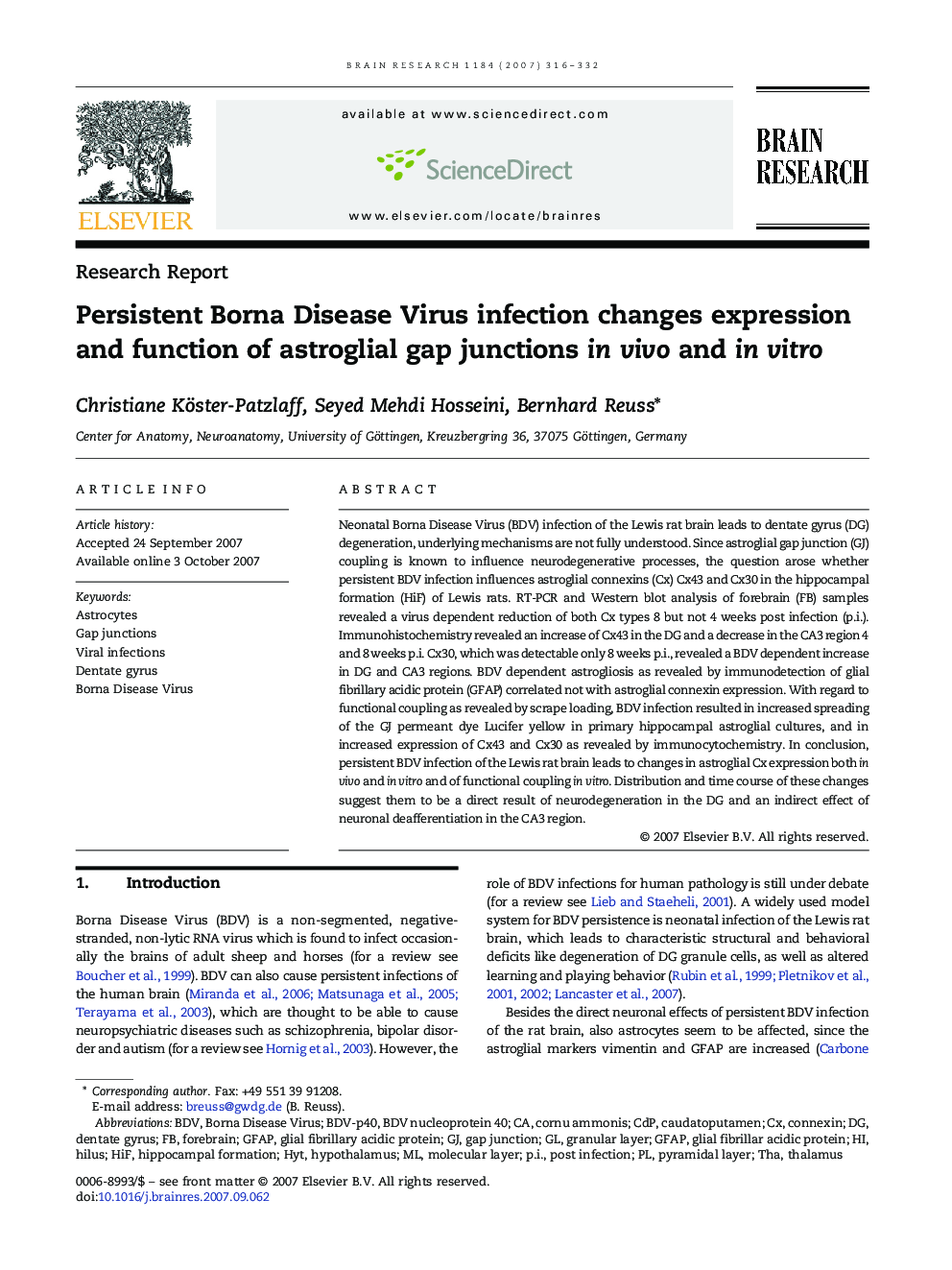| کد مقاله | کد نشریه | سال انتشار | مقاله انگلیسی | نسخه تمام متن |
|---|---|---|---|---|
| 4330366 | 1614255 | 2007 | 17 صفحه PDF | دانلود رایگان |

Neonatal Borna Disease Virus (BDV) infection of the Lewis rat brain leads to dentate gyrus (DG) degeneration, underlying mechanisms are not fully understood. Since astroglial gap junction (GJ) coupling is known to influence neurodegenerative processes, the question arose whether persistent BDV infection influences astroglial connexins (Cx) Cx43 and Cx30 in the hippocampal formation (HiF) of Lewis rats. RT-PCR and Western blot analysis of forebrain (FB) samples revealed a virus dependent reduction of both Cx types 8 but not 4 weeks post infection (p.i.). Immunohistochemistry revealed an increase of Cx43 in the DG and a decrease in the CA3 region 4 and 8 weeks p.i. Cx30, which was detectable only 8 weeks p.i., revealed a BDV dependent increase in DG and CA3 regions. BDV dependent astrogliosis as revealed by immunodetection of glial fibrillary acidic protein (GFAP) correlated not with astroglial connexin expression. With regard to functional coupling as revealed by scrape loading, BDV infection resulted in increased spreading of the GJ permeant dye Lucifer yellow in primary hippocampal astroglial cultures, and in increased expression of Cx43 and Cx30 as revealed by immunocytochemistry. In conclusion, persistent BDV infection of the Lewis rat brain leads to changes in astroglial Cx expression both in vivo and in vitro and of functional coupling in vitro. Distribution and time course of these changes suggest them to be a direct result of neurodegeneration in the DG and an indirect effect of neuronal deafferentiation in the CA3 region.
Journal: Brain Research - Volume 1184, 12 December 2007, Pages 316–332